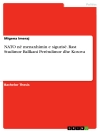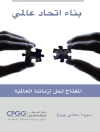This book examines the dramatic unfolding of US occupation, withdrawal, and intervention in the Korean peninsula in the past and sheds light on the broader issue of US military occupations of other countries in the twentieth first century.
Spis treści
Abbreviations List of Tables Acknowledgement Introduction Sources of US Commitment toward Korea PART I: US DIPLOMACY TOWARD KOREA IN THE ERA OF THE RUSSO-JAPANESE WAR The Rise of Korean Expectation and Decline of US Commitment to Korea, 1882-1901 Great Power Rivalry and US Assessment at the Outbreak of the War US Diplomacy and the Japanese Imposition of Protectorate on Korea PART II: US DIPLOMACY TOWARD KOREA DURING WORLD WAR II Vision of Cooperation among the Allies and the Four- Power Trusteeship Plan for Korea Emergence of the Bi-Polar Perception and a Missed Opportunity for Diplomacy Consolidation of the Bi-Polar Perception and US Suggestion of the Thirty-Eighth Parallel PART III: US POLICY TOWARD KOREA FROM 1945 TO JUNE 1950 Uncertain Strategic Situation and Rise of Competing Recommendations toward Korea The Re-emergence of a Multipolar Vision and the Decision for Withdrawal from Korea The Erosion of Multipolar Perception and the Road to Intervention Conclusion: US Commitment toward South Korea since 1950
O autorze
SEUNG-YOUNG KIM is a Lecturer (assistant professor) in the Department of Politics and International Relations at the University of Aberdeen in Scotland, UK. He worked as a diplomatic and UN correspondent for The Chosun Ilbo newspaper in South Korea, and has published research articles in Cambridge Review of International Affairs and Diplomacy& Statecraft.












